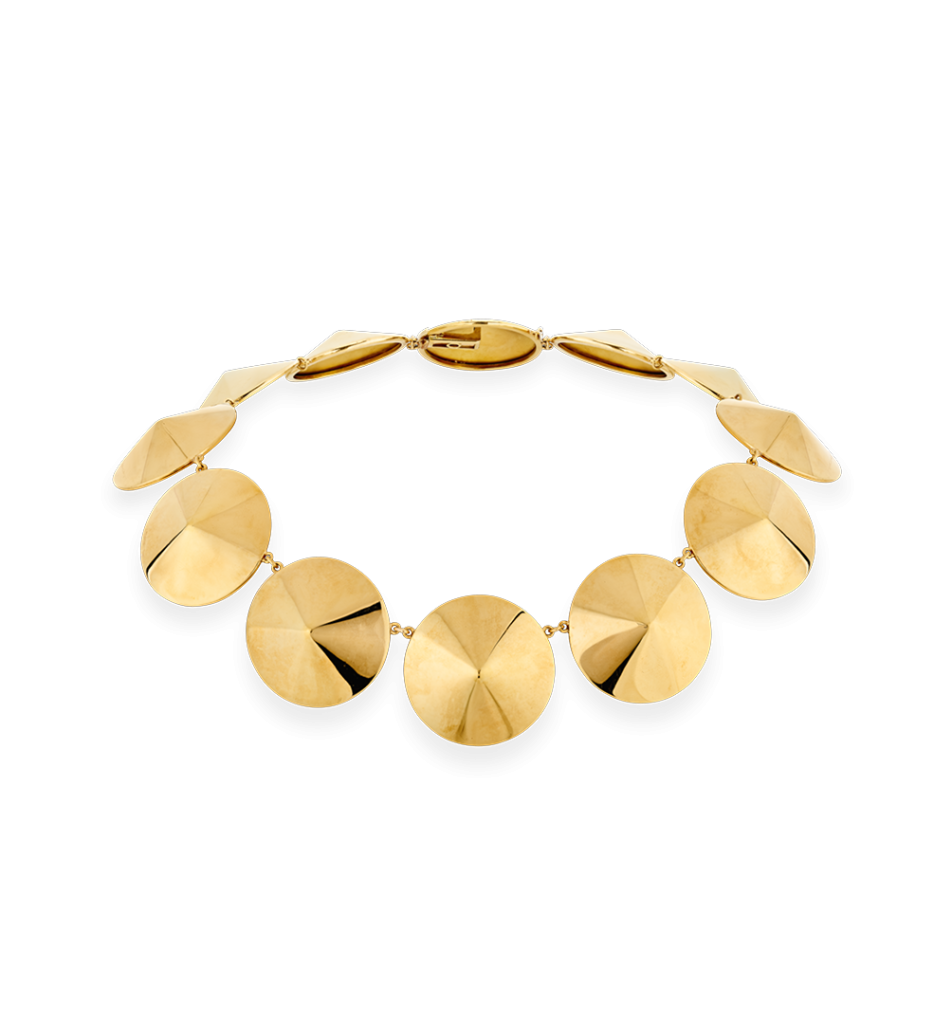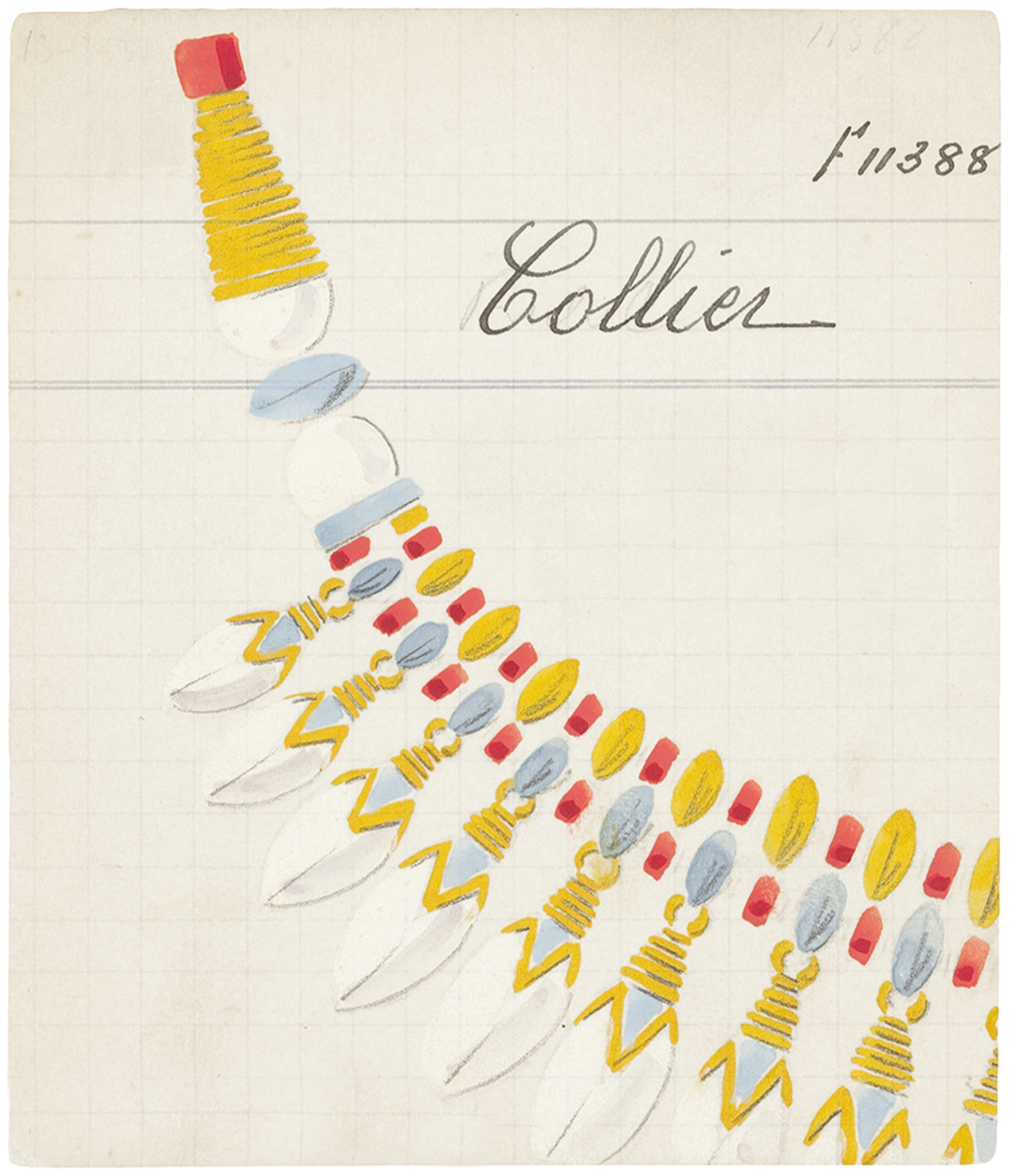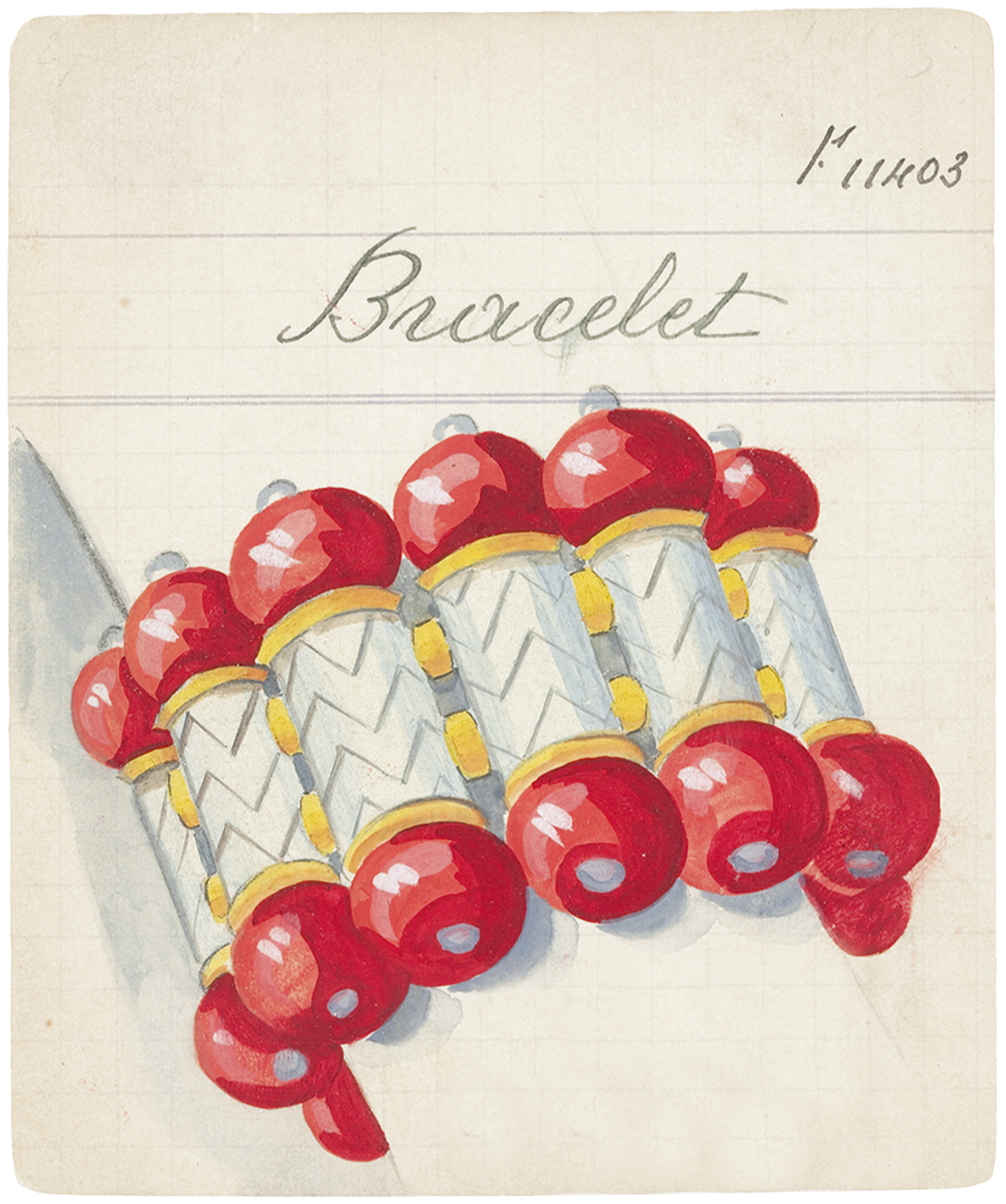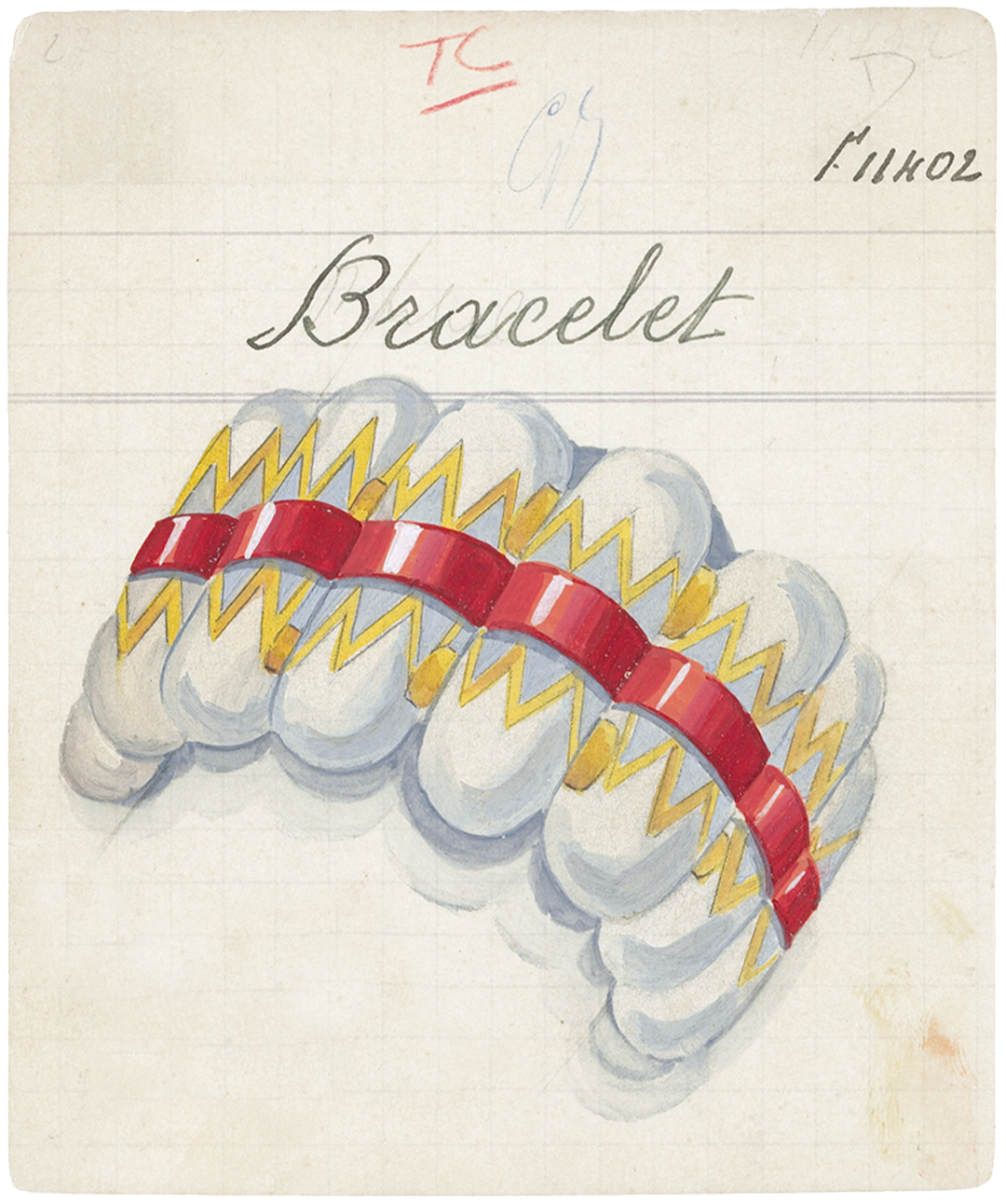The Exposition coloniale internationale (International Colonial Exhibition) that took place in Paris from May to November 1931, enabled the public to discover the architecture of Cameroon, Algeria, Indochina, and elsewhere, as seen in the pavilions installed in the Bois de Vincennes.
This event was part of a long line of representations of non-European cultures as perceived by the West, dating back to the nineteenth century. The numerous African and Asian works presented at these events were responsible for a thorough renewal of the European art world.
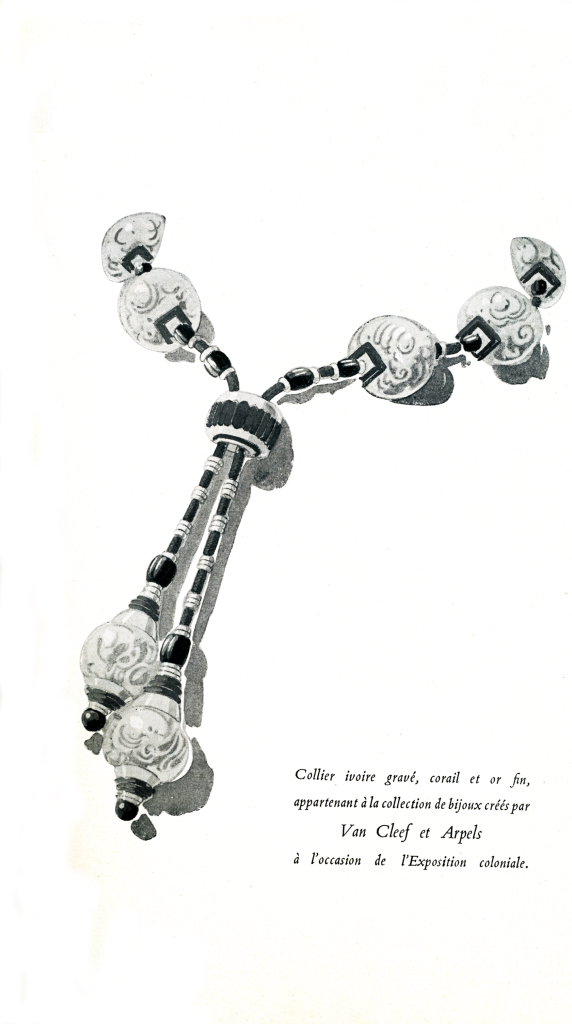
The representation of Asian and African arts in jewelry
The Paris Colonial Exhibition also featured a Palais des industries (Palace of Industries), which contained sections dedicated to jewelry, goldsmithery, wrought ironwork, and so-called Parisian articles (Categories 94 and 95). The jewelers drew upon Asia’s iconographic repertoire, as in the so-called “Chinese Hat” set created by Van Cleef & Arpels, as well as “borrowing from the African arts”1Henri Clouzot, Les Arts précieux à l’Exposition coloniale, [n.p.] (1931), 16. for materials and the representation of volumes.
This was also the case for a Costume necklace presented by the Maison on this occasion, “in three colors of gold— yellow, red, and white—with strips of ivory carved with zig-zag motifs and carved coral balls at their ends.” This necklace was accompanied by “pendant earrings”, and a Costume bracelet of similar design. Another necklace formed part of this set—one with alternating rounds of ivory, osmior, and yellow gold with coral balls— together with a pair of pendant earrings with coral balls and pear-shapes suspended from a yellow gold ring, and separated by osmior and gold motifs. The final piece of this set was a rope necklace threaded with coral beads, yellow gold rounds, and carved ivory balls.
Costume jewels resulting from the financial crisis
The use of materials such as ivory and coral was not solely linked to a fascination for faraway lands. These materials were among the least costly used by the jewelry arts, which explains the addition of the word “costume” for these pieces of jewelry. The stock market crash on October 24, 1929, had a profound impact on the jewelry world. “As a result of the economic and financial crisis affecting the entire world,”2Henri Clouzot, Les Arts précieux à l’Exposition coloniale, [n.p.] (1931), 7. only twenty-three jewelers attended the Exposition coloniale internationale.
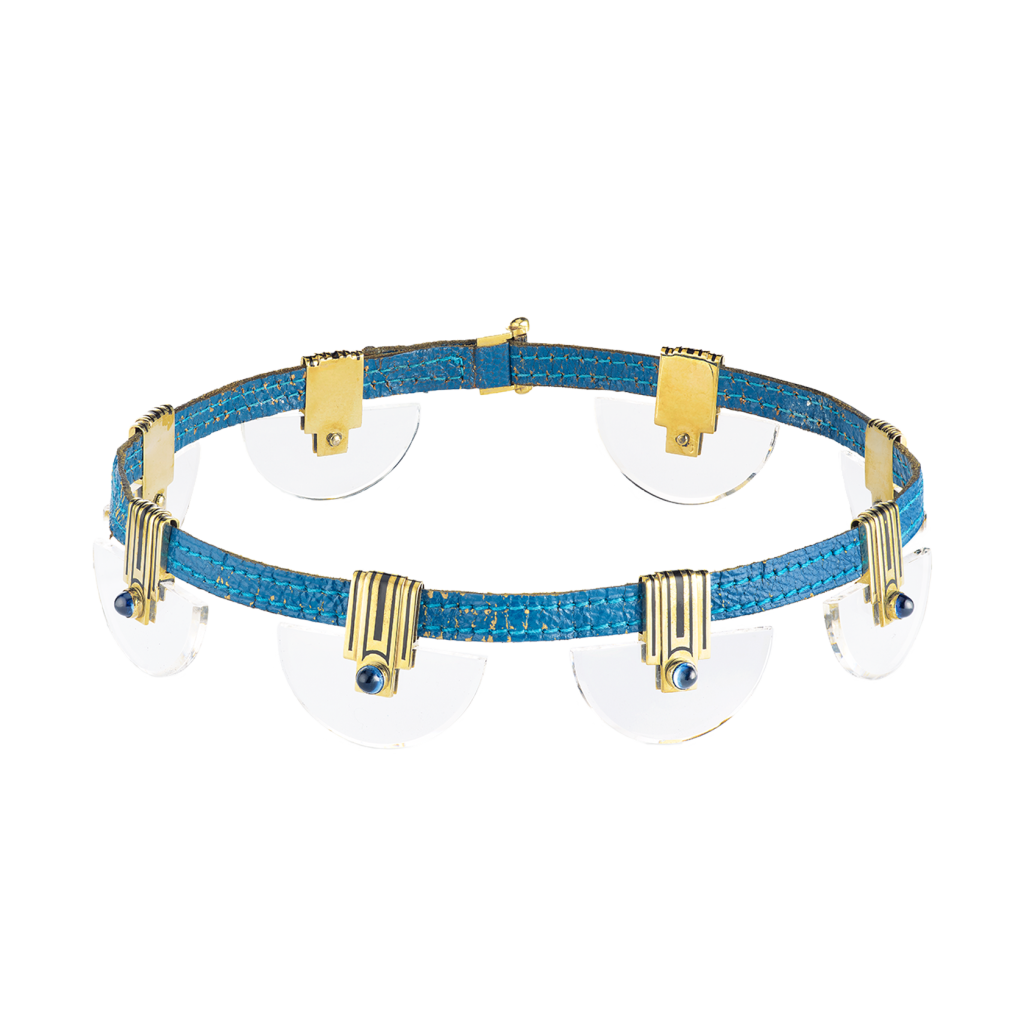
Toward Modernism
As the press of the time pointed out, the creators “knew how to draw new forms and colors”3Henri Clouzot, Les Arts précieux à l’Exposition coloniale, [n.p.] (1931), 16. from non-European works of art. The Exposition coloniale internationale marked a break with the Expositions of 1925 and 1929. In place geometric compositions—which favored straight lines and combinations of diamonds mounted on platinum with sapphires, rubies, and emeralds—jewelry with bold volumes, curves, and spheres was to be found from then on. Such pieces featured small ivory, coral, or jade balls and cylinders flanked by yellow gold. This event provided a stage for the Maison’s first steps toward Modernism.
